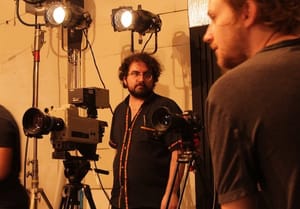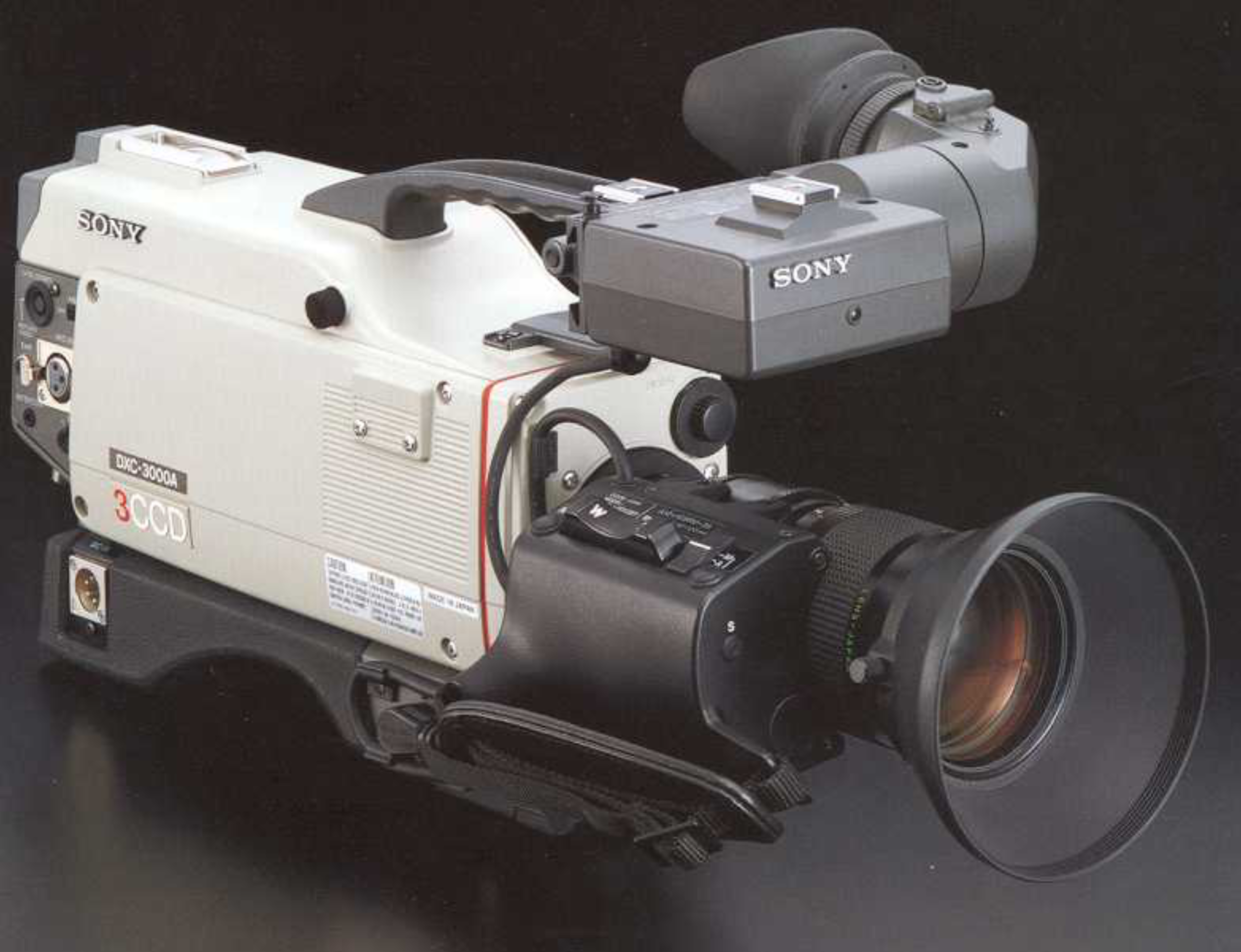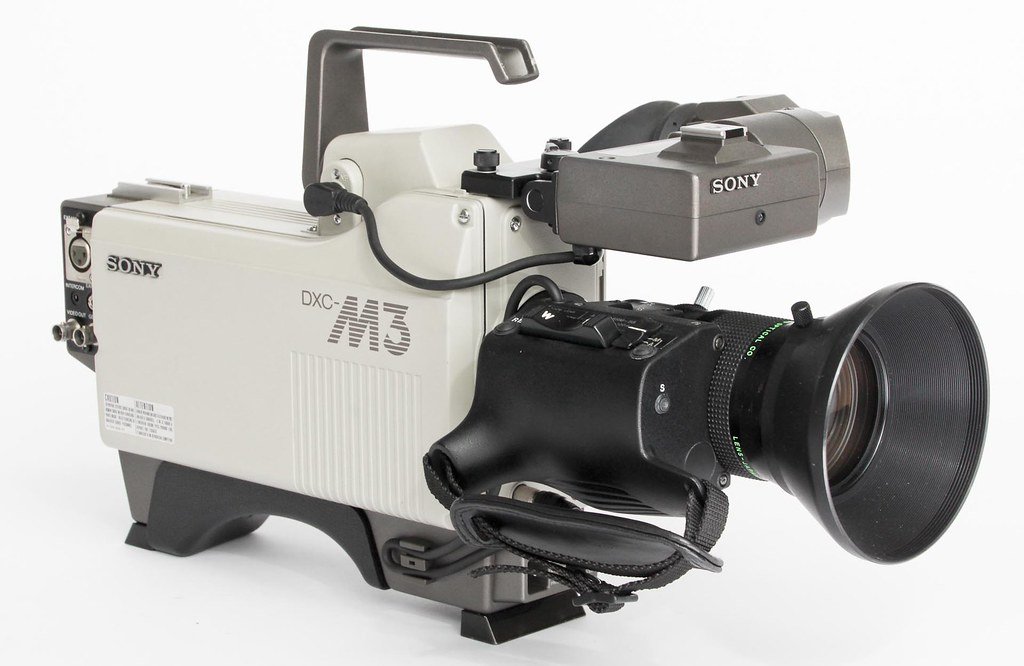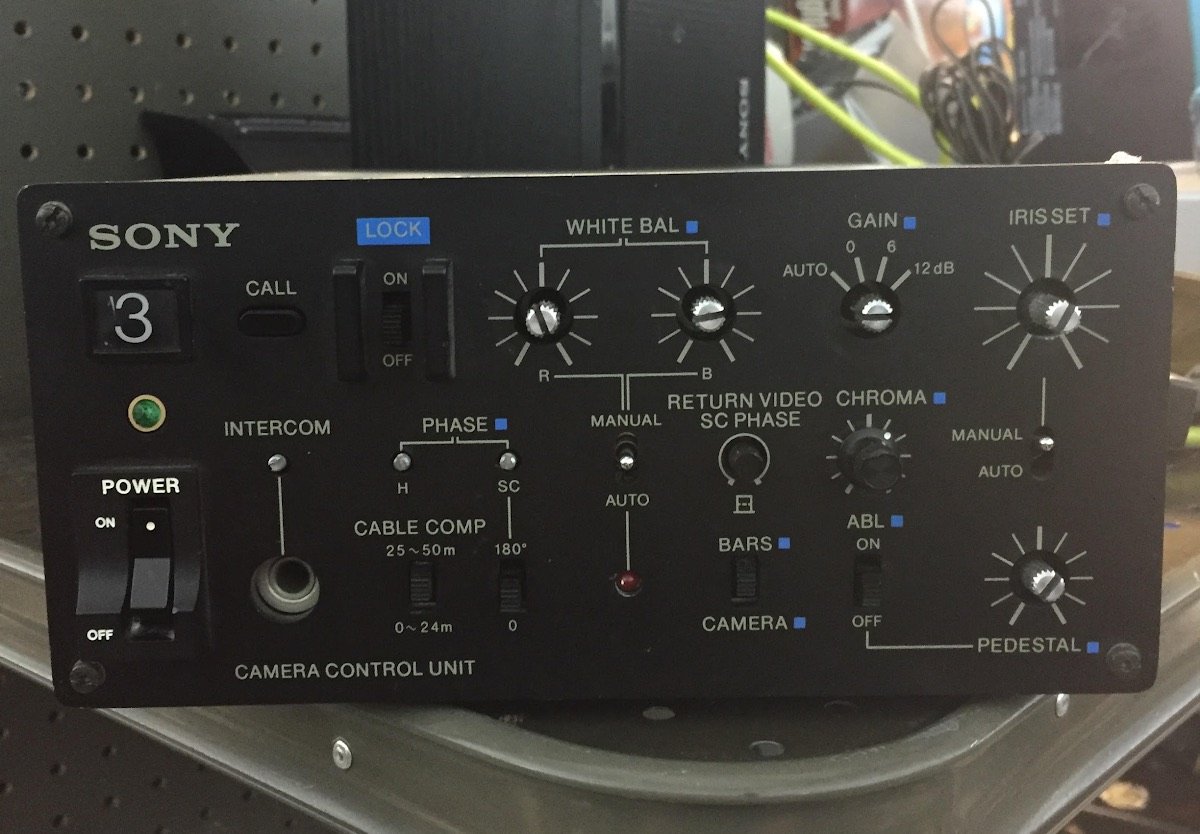
Glossary
CCD Camera: A camera that uses a digital sensor called CCD (or charge-coupled device). Converts
light hitting the sensor into pixels that create an image. Replaced tube cameras in the 1980s along with CMOS (complementary metal-oxide-semiconductor) cameras.

Sony DXC-3000 (CCD Camera)
Analog Tube Camera: A form of capturing video that relied on using glass vacuum tubes to convert light into electrical signals. Based on the technology that made up old televisions until LEDs replaced them.

Sony DXC-M3A (Tube Camera)
U-Matic: The forerunner of VHS and Beta. Created in the late ’60s, it was the first magnetic tape technology that would keep the tape in a self-contained cassette.
Vidcon Tubes: A popular type of vacuum tube used for capturing video until the late ’70s. It contained a scanning beam that would shoot through the glass, capturing an image and converting it to an electrical signal.
Plumbicon Tubes: A type of tube created by Phillips, manufactured until 2016. Known for not requiring much power, its high resolution, and its “soft” look. Unlike the Vidicon tube, it would use lead as its photosensitive target.
Saticon Tubes: The Hitachi corporation’s version of a video tube. Also used by Sony.
Newvicon: A type of video tube known for its high light sensitivity.
Firewire-to-Thunderbolt Adapter: A type of adapter that moves digital information between “Firewire” ports and “Thunderbolt” ports.
VTR (Video Tape Recorder): A system for recording video onto magnetic tapes. This technology eventually became the much hipster-beloved VHS tape.
Also read: The Irishman Shutout at Oscars: What Does It Mean for Netflix?
VTR Output: A type of output that can send out video tape signals.

Sony VTR Control Box
RGB: Stands for Red, Green, and Blue. The most common way of recording video in color, splitting an image into three “channels”—one for red, another green, and third for blue. When these three channels are laid on top of each other, it reproduces color. This is still used today: If you zoom in really close on a TV or monitor using your phone, you can see a grid of tiny Red, Green, and Blue lights packed together.
BNC: A type of connector that uses a little sharp stick (called a bayonet) and a circle that lightly screws in and keeps it in place. Usually seen on an SDI cable.
RGB BNC: A type of cable that carries the red channel, the blue channel, and yellow channel with separate BNC connectors. Looks like Medusa: There’s one fat cable that separates into three skinnier cables.
AJA Digital Analog HD Converter: A box created by the AJA company that can convert “analog” signals (such as tape) to 1s and 0s that can be read by a computer. The “HD” means it can convert signals into a High Definition image (usually 1920 pixels wide by 1080 pixels tall).
SD Converter Box: Another type of converter box that turns analog signals into digital systems, but creates a Standard Definition image (720 pixels wide by 480 pixels tall) less sharp than HD.
Analog Control Box: An external box that lets you control the video signal from cameras. It’s not
part of the camera, and not all cameras had them, but it allows you to adjust brightness and color and send video signals. Mostly used in old TV studios to control the cameras from the control room and plug them all in.
SDI Cable: A cable that carries video and audio information, usually with a BNC connector.
RCA Cable: ’90s kids will remember these familiar red, white, and yellow cables that came out of the back of DVD players and video game systems before HDMI took over. The red and white cables carry audio and the yellow cable carries the video.
BNC-to-RCA Converter: A simple cable converter that adapts RCA cables to a BNC (or vice versa).
ISO: The most common way of rating something’s photosensitivity (or the amount of light it needs
to create an image). Named after the International Organization for Standardization. The bigger the “ISO” number, the less light you need. For instance, if a piece of unexposed film or camera sensor is rated at “200 ISO,” you should shoot outside with the sun or with bright lights. If a piece of unexposed film is rated at “1000 ISO,” you can shoot in darker rooms.
Fidel Ruiz-Healy is a New York based cinematographer whose work can be found at fidelruizhealy.com and theASFC.com. “Two Words” premiered at the Brooklyn Film Festival in 2019.

